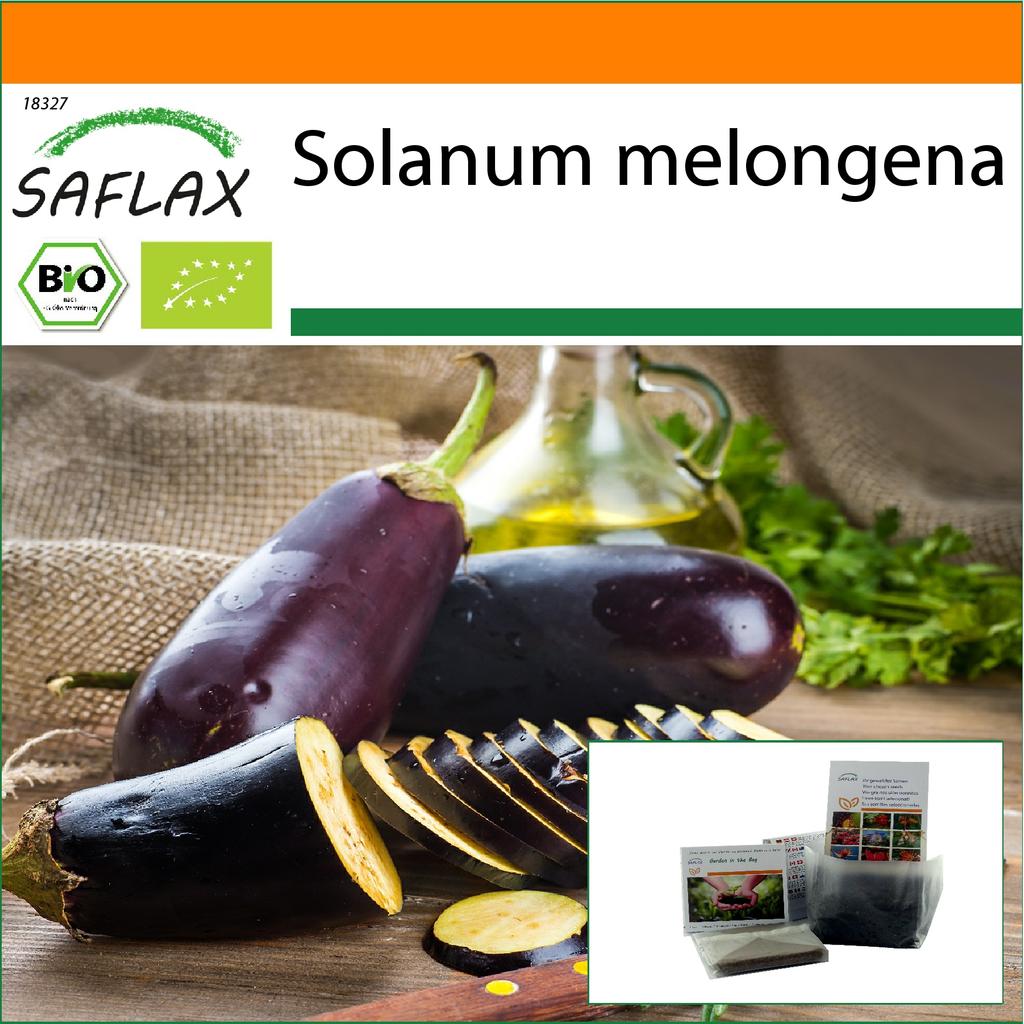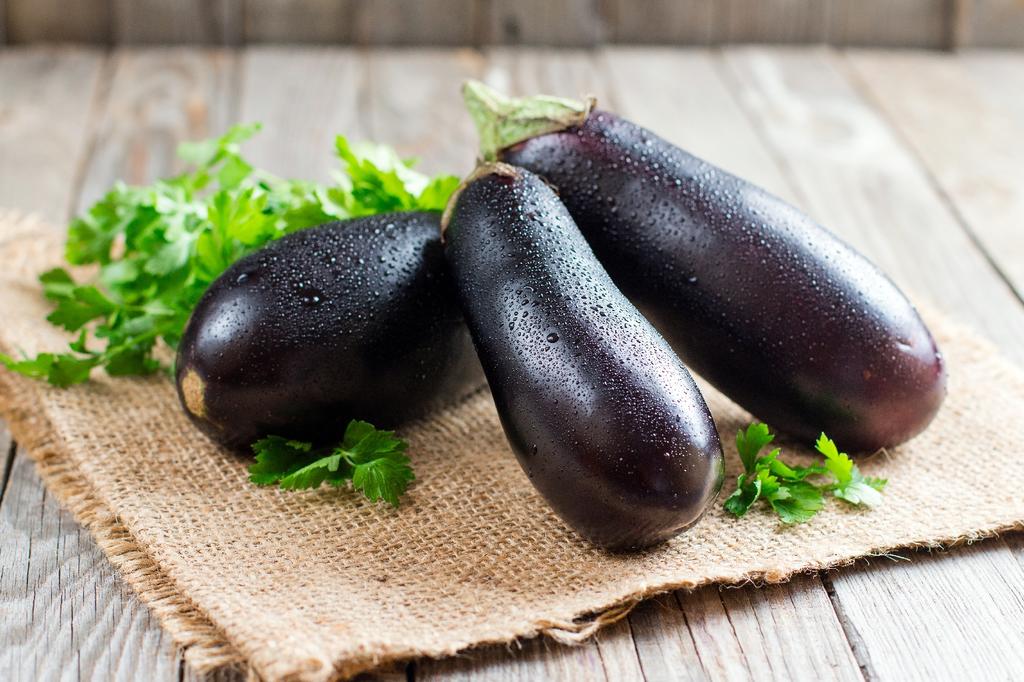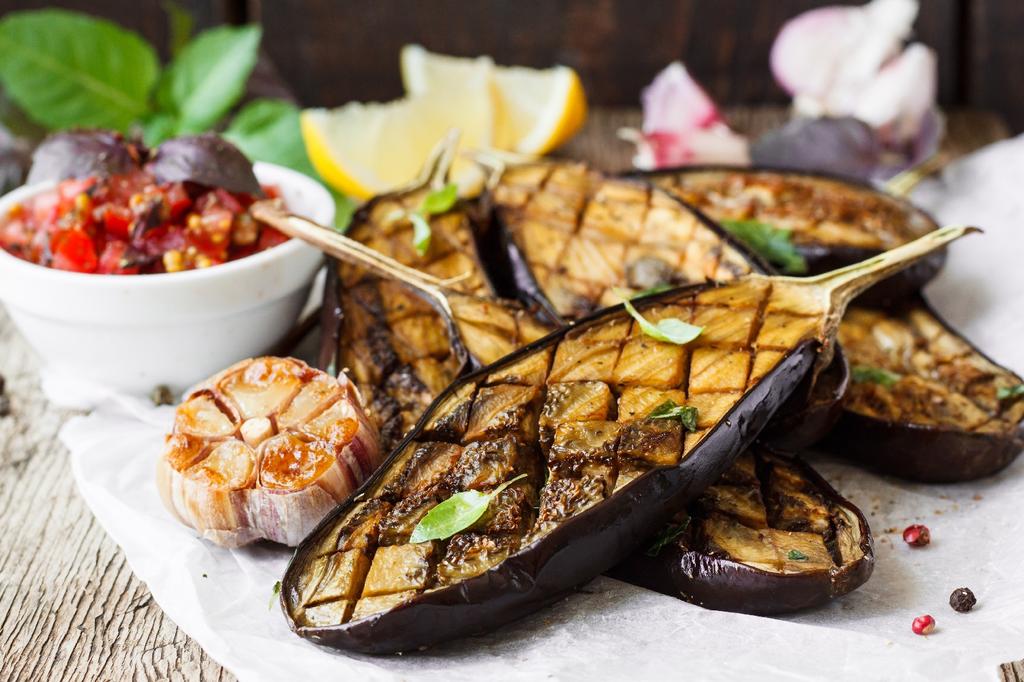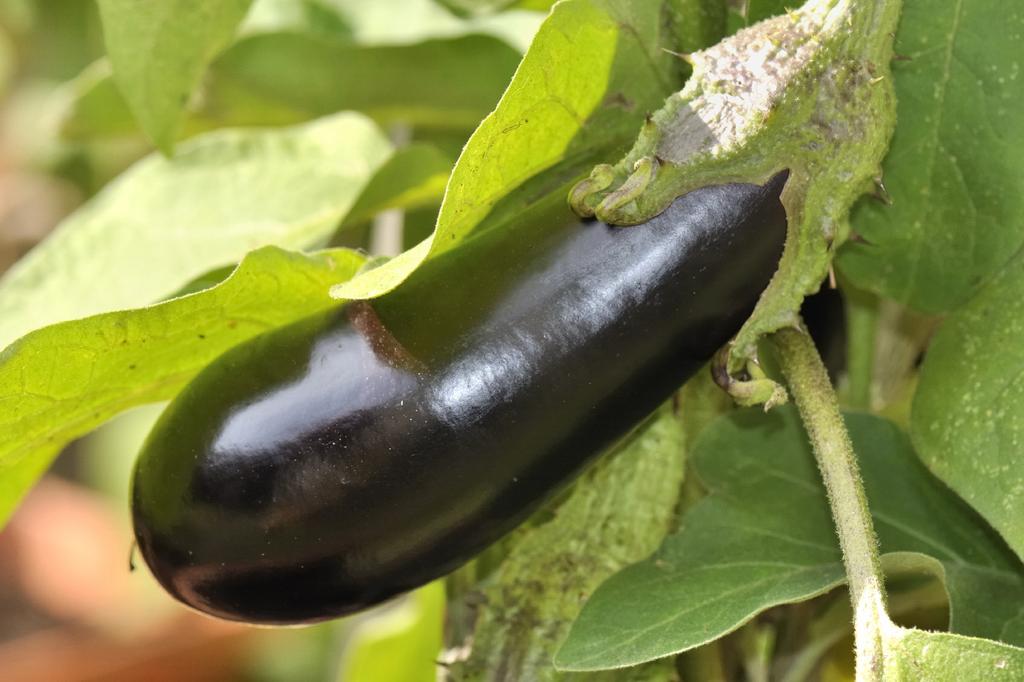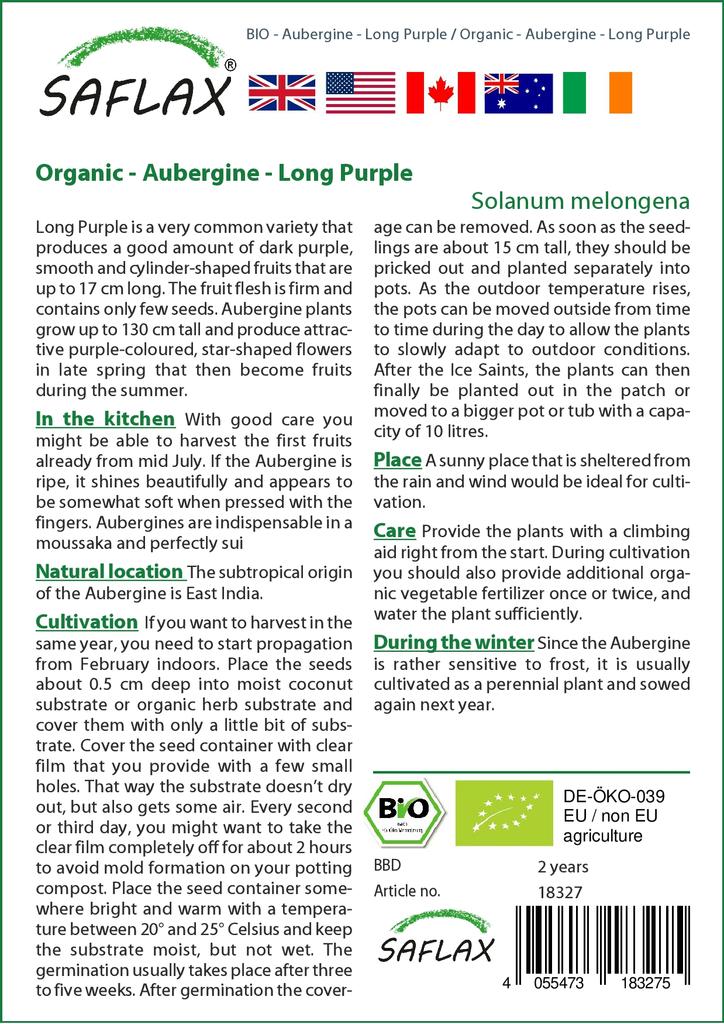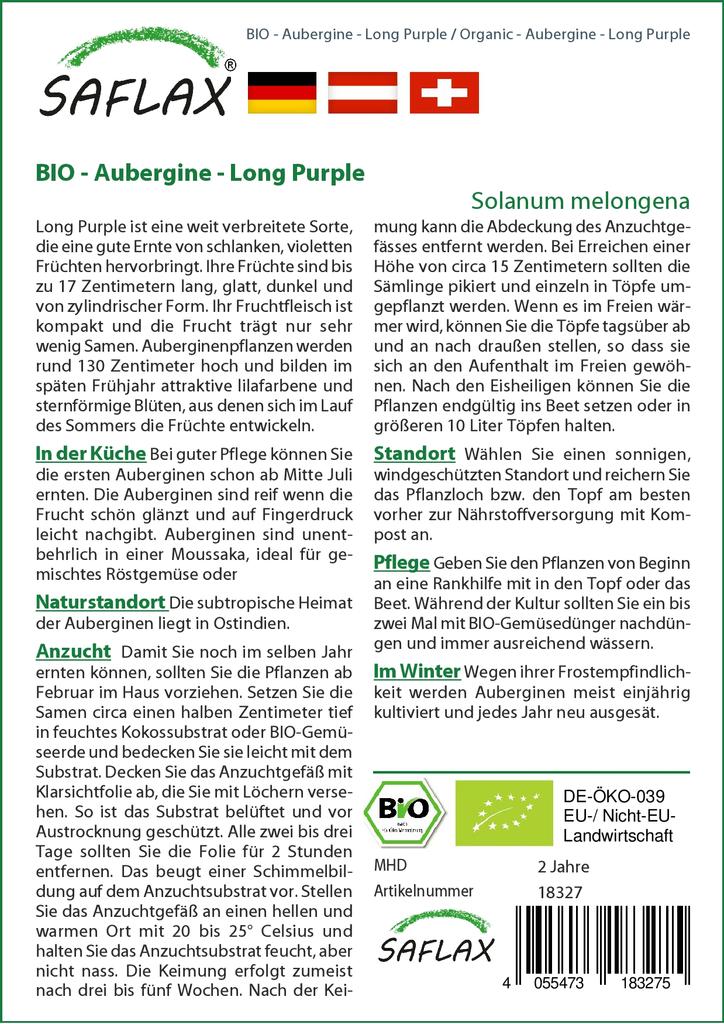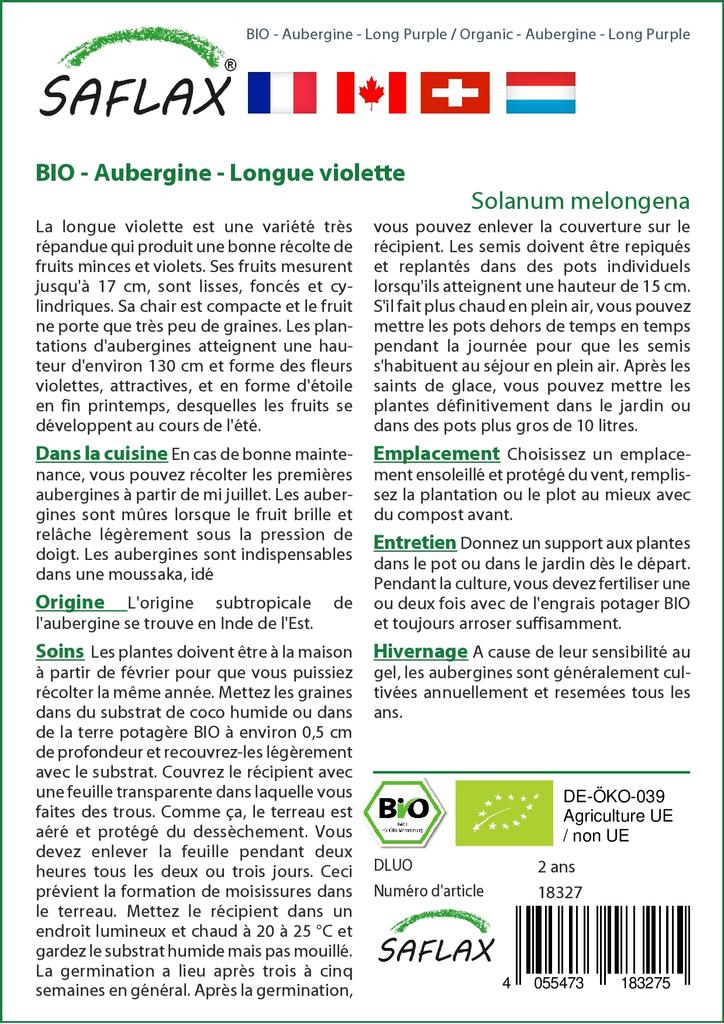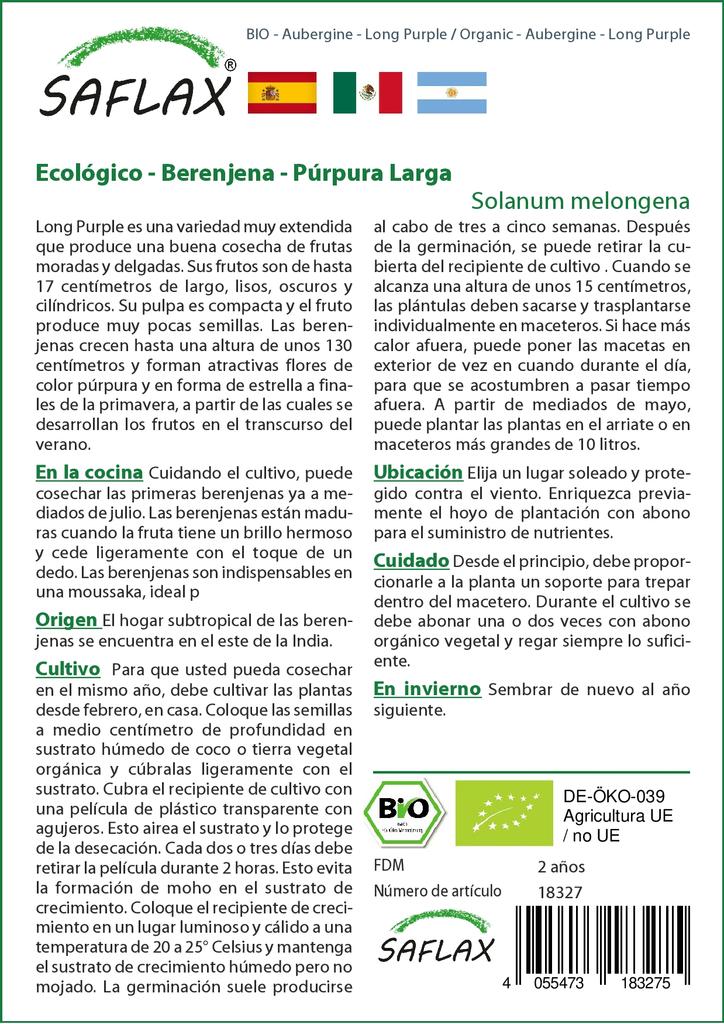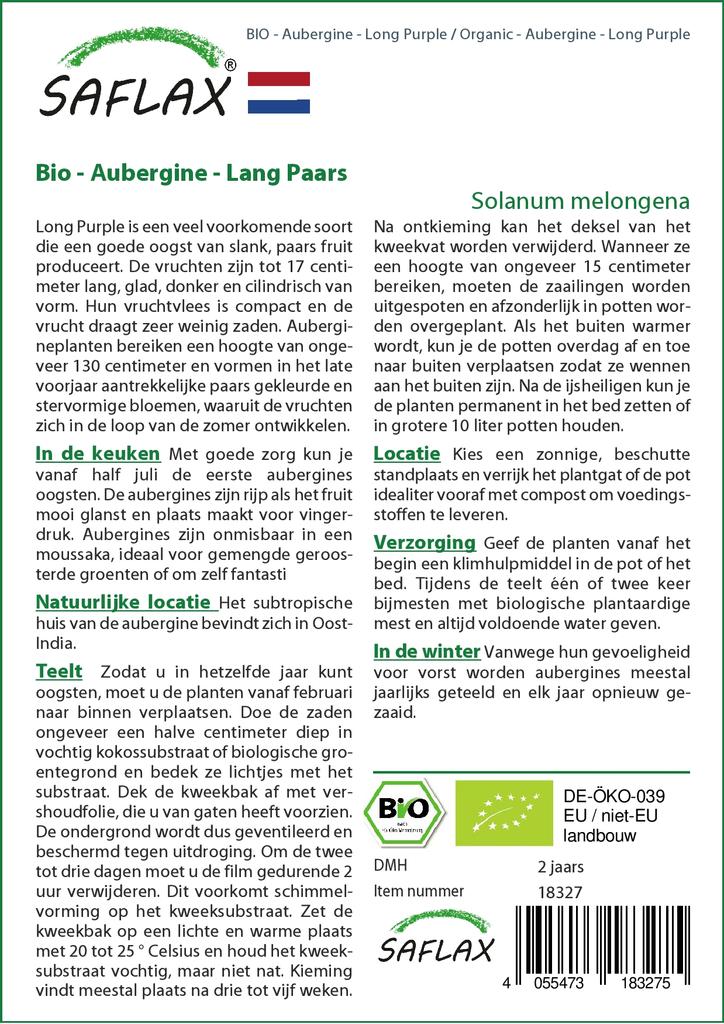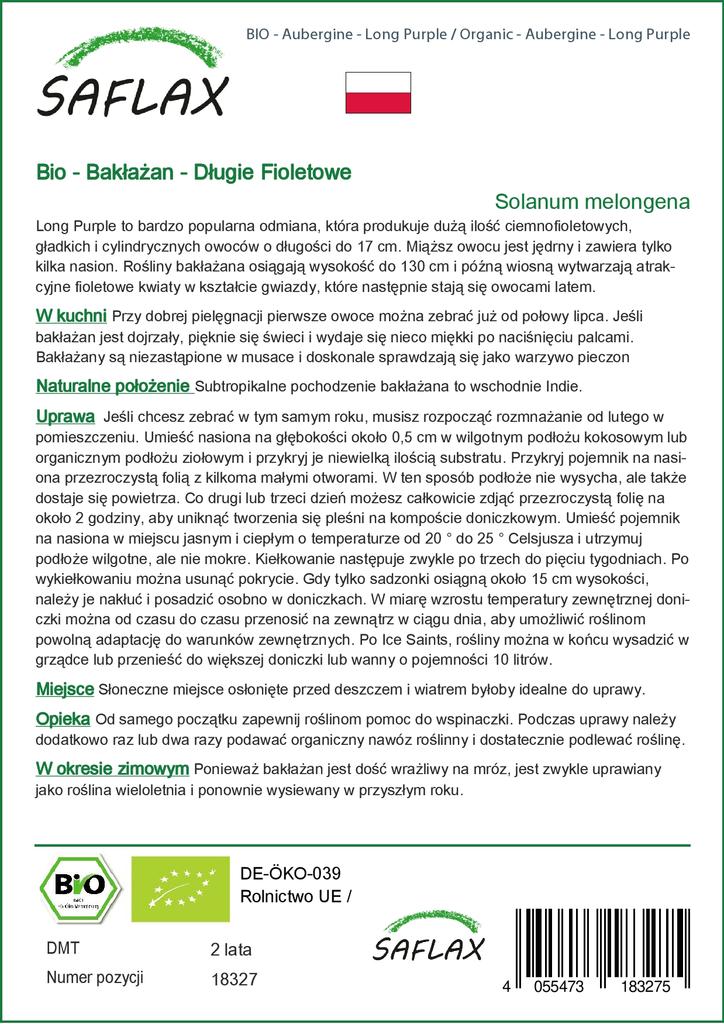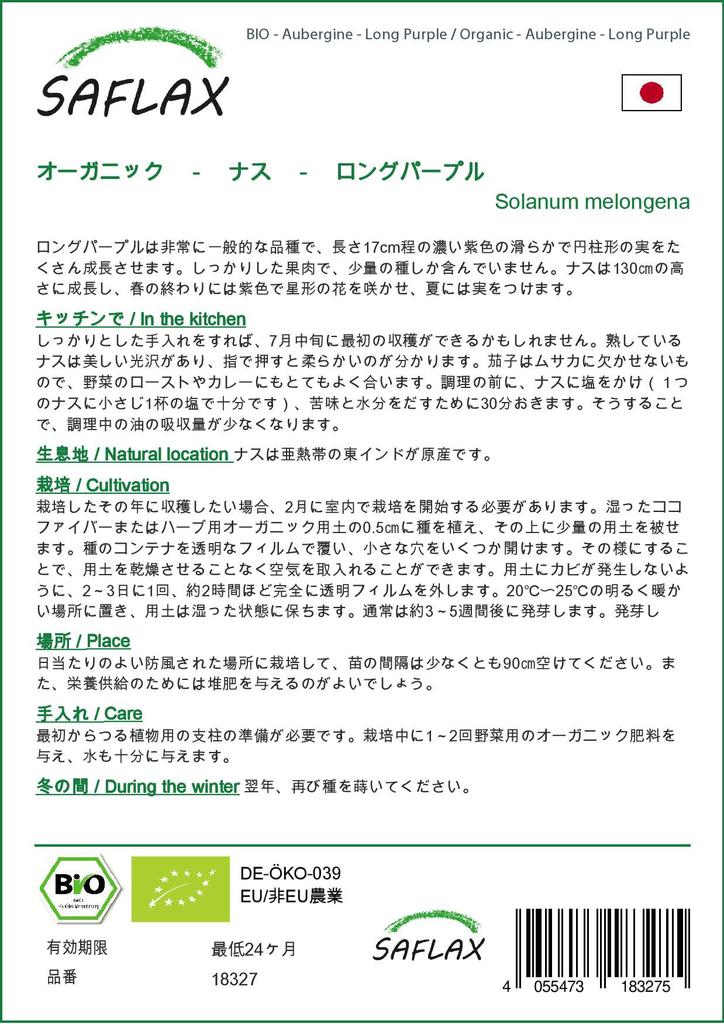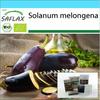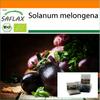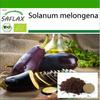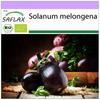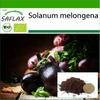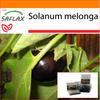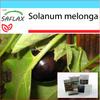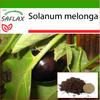Worth knowing:
Long Purple is a very common variety that produces a good amount of dark purple, smooth and cylinder-shaped fruits that are up to 17 cm long. The fruit flesh is firm and contains only few seeds. Aubergine plants grow up to 130 cm tall and produce attractive purple-coloured, star-shaped flowers in late spring that then become fruits during the summer.
Natural Location:
The subtropical origin of the Aubergine is East India.
Cultivation:
If you want to harvest in the same year, you need to start propagation from February indoors. Place the seeds about 0.5 cm deep into moist coconut substrate or organic herb substrate and cover them with only a little bit of substrate. Cover the seed container with clear film that you provide with a few small holes. That way the substrate doesn’t dry out, but also gets some air. Every second or third day, you might want to take the clear film completely off for about 2 hours to avoid mold formation on your potting compost. Place the seed container somewhere bright and warm with a temperature between 20° and 25° Celsius and keep the substrate moist, but not wet. The germination usually takes place after three to five weeks. After germination the coverage can be removed. As soon as the seedlings are about 15 cm tall, they should be pricked out and planted separately into pots. As the outdoor temperature rises, the pots can be moved outside from time to time during the day to allow the plants to slowly adapt to outdoor conditions. After the Ice Saints, the plants can then finally be planted out in the patch or moved to a bigger pot or tub with a capacity of 10 litres.
Place:
A sunny place that is sheltered from the rain and wind would be ideal for cultivation.
Care:
Provide the plants with a climbing aid right from the start. During cultivation you should also provide additional organic vegetable fertilizer once or twice, and water the plant sufficiently.
During the winter:
Since the Aubergine is rather sensitive to frost, it is usually cultivated as a perennial plant and sowed again next year.
Picture credits:
- © Frank Laue - © Saflax - http://www.saflax.de/copyright
- © Frank Laue - © Saflax - http://www.saflax.de/copyright
- © Frank Laue - © Saflax - http://www.saflax.de/copyright
- © About © : Contact SAFLAX - - http://www.saflax.de/copyright
- © About © : Contact SAFLAX - - http://www.saflax.de/copyright
- © About © : Contact SAFLAX - - http://www.saflax.de/copyright
- © About © : Contact SAFLAX - - http://www.saflax.de/copyright
- © About © : Contact SAFLAX - - http://www.saflax.de/copyright
- © About © : Contact SAFLAX - - http://www.saflax.de/copyright









